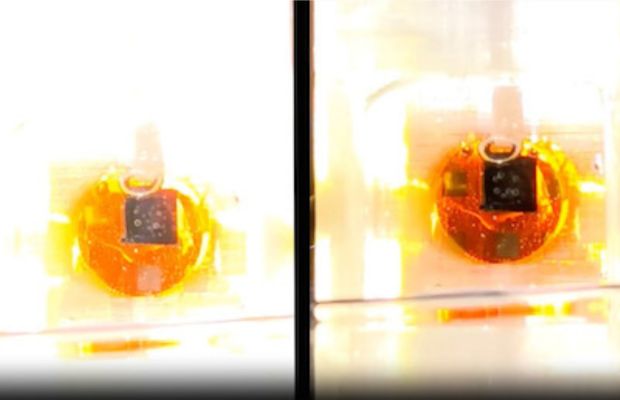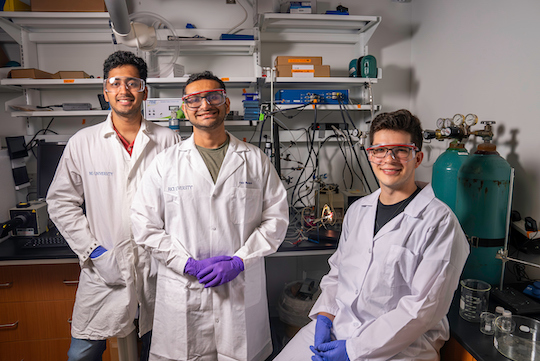Rice Engineers Create Record-Breaking Solar Device for Efficient Hydrogen Production

Engineers at the Rice University have developed a groundbreaking device capable of efficiently “transforming sunlight into hydrogen.” This remarkable creation combines cutting-edge halide perovskite semiconductors with electrocatalysts in a single, robust, cost-effective, and scalable unit.
The device, which is essentially a solar-driven water-splitting cell, demonstrated an impressive 20.8 per cent solar-to-hydrogen conversion efficiency, as reported in a study published in Nature Communications. Notably, this study is now freely accessible without any paywall restrictions.

The implications of this breakthrough technology extend beyond hydrogen production, as it lays the foundation for various chemical reactions utilizing solar-generated electricity to convert feedstocks into fuels. Under the guidance of chemical and biomolecular engineer Aditya Mohite, the team constructed an integrated photoreactor equipped with an anticorrosion barrier. This barrier effectively shields the semiconductor from water while facilitating seamless electron transfer.
Austin Fehr, a chemical and biomolecular engineering doctoral student and one of the study’s lead authors commented, “Using sunlight as an energy source to manufacture chemicals is one of the largest hurdles to a clean energy economy. Our goal is to build economically feasible platforms that can generate solar-derived fuels. Here, we designed a system that absorbs light and completes electrochemical water-splitting chemistry on its surface.”
The solar device goes by the name of a photoelectrochemical cell, as it performs the absorption of light, its transformation into electricity, and utilizes this electricity to drive a chemical reaction, all within a single device. The application of photoelectrochemical technology for producing green hydrogen had faced challenges in the past due to low efficiencies and the expensive nature of semiconductors.

“All devices of this type produce green hydrogen using only sunlight and water, but ours is exceptional because it has record-breaking efficiency and it uses a semiconductor that is very cheap,” Fehr added.
The solar device was conceived and developed by the Mohite lab, in collaboration with others, by transforming their high-performance solar cell into a reactor capable of harnessing harvested energy to split water into oxygen and hydrogen. However, a significant hurdle they faced was the inherent instability of halide perovskites in water. Attempts to insulate the semiconductors with coatings proved troublesome, as they either interfered with their functionality or caused damage.
Michael Wong, a Rice chemical engineer and co-author of the study noted, “Over the last two years, we’ve gone back and forth trying different materials and techniques.” After lengthy trials failed to yield the desired result, the researchers finally came across a winning solution.
“Our key insight was that you needed two layers to the barrier, one to block the water and one to make good electrical contact between the perovskite layers and the protective layer,” Fehr said. “Our results are the highest efficiency for photoelectrochemical cells without solar concentration, and the best overall for those using halide perovskite semiconductors.
“It is a first for a field that has historically been dominated by prohibitively expensive semiconductors, and may represent a pathway to commercial feasibility for this type of device for the first time ever,” Fehr said.
The researchers showed their barrier design worked for different reactions and with different semiconductors, making it applicable across many systems.
Mohite said, “We hope that such systems will serve as a platform for driving a wide range of electrons to fuel-forming reactions using abundant feedstocks with only sunlight as the energy input.”
“With further improvements to stability and scale, this technology could open up the hydrogen economy and change the way humans make things from fossil fuel to solar fuel,” Fehr added.





I just like the valuable info yyou suoply foor yiur articles.
I wull bookjark yopur blog andd test again her frequently.
I am reasonably certain I will bbe told plenty of new stuff prooer right here!
Goodd luhk for thhe following!